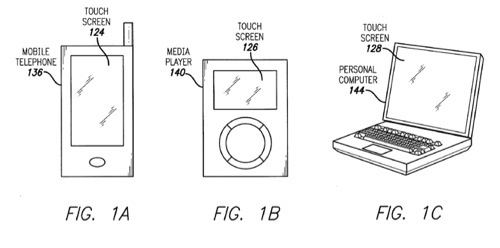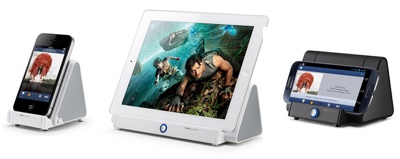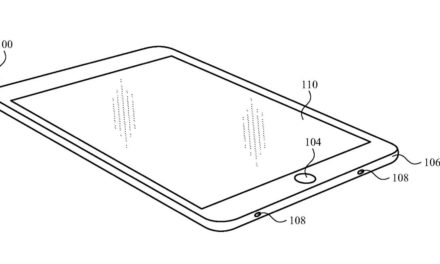An Apple patent (number 8,217,913) for an integrated touch screen has appeared at the U.S. Patent & Trademark Office shows that Apple has investigated touch screens on Macs — at least laptop Macs.
Per the patent, displays with touch sensing circuitry integrated into the display pixel stackup are provided. Circuit elements, such as touch signal lines, such as drive lines and sense lines, grounding regions, in the display pixel stackups can be grouped together to form touch sensing circuitry that senses a touch on or near the display.
An integrated touch screen can include multi-function circuit elements that can operate as circuitry of the display system to generate an image on the display, and can also form part of a touch sensing system that senses one or more touches on or near the display.
The multi-function circuit elements can be, for example, capacitors in display pixels that can be configured to operate as storage capacitors/electrodes, common electrodes, conductive wires/pathways, etc., of the display circuitry in the display system, and that may also be configured to operate as circuit elements of the touch sensing circuitry.
Here’s Apple’s background and summary on the invention: “Many types of input devices are presently available for performing operations in a computing system, such as buttons or keys, mice, trackballs, joysticks, touch sensor panels, touch screens and the like. Touch screens, in particular, are becoming increasingly popular because of their ease and versatility of operation as well as their declining price.
“Touch screens can include a touch sensor panel, which can be a clear panel with a touch-sensitive surface, and a display device such as a liquid crystal display (LCD) that can be positioned partially or fully behind the panel so that the touch-sensitive surface can cover at least a portion of the viewable area of the display device. Touch screens can allow a user to perform various functions by touching the touch sensor panel using a finger, stylus or other object at a location often dictated by a user interface (UI) being displayed by the display device.
“In general, touch screens can recognize a touch and the position of the touch on the touch sensor panel, and the computing system can then interpret the touch in accordance with the display appearing at the time of the touch, and thereafter can perform one or more actions based on the touch. In the case of some touch sensing systems, a physical touch on the display is not needed to detect a touch. For example, in some capacitive-type touch sensing systems, fringing fields used to detect touch can extend beyond the surface of the display, and objects approaching near the surface may be detected near the surface without actually touching the surface.
“Capacitive touch sensor panels can be formed from a matrix of drive and sense lines of a substantially transparent conductive material, such as Indium Tin Oxide (ITO), often arranged in rows and columns in horizontal and vertical directions on a substantially transparent substrate. It is due in part to their substantial transparency that capacitive touch sensor panels can be overlaid on a display to form a touch screen, as described above. However, overlaying a display with a touch sensor panel can have drawbacks, such as added weight and thickness, additional power required to drive the touch sensor panel, and decreased brightness of the display.
“This relates to touch sensing circuitry integrated into the display pixel stackup (i.e., the stacked material layers forming the display pixels) of a display, such as an LCD display. Circuit elements in the display pixel stackups can be grouped together to form touch sensing circuitry that senses a touch on or near the display. Touch sensing circuitry can include, for example, touch signal lines, such as drive lines and sense lines, grounding regions, and other circuitry.
“An integrated touch screen can include multi-function circuit elements that can form part of the display circuitry designed to operate as circuitry of the display system to generate an image on the display, and can also form part of the touch sensing circuitry of a touch sensing system that senses one or more touches on or near the display. The multi-function circuit elements can be, for example, capacitors in display pixels of an LCD that can be configured to operate as storage capacitors/electrodes, common electrodes, conductive wires/pathways, etc., of the display circuitry in the display system, and that may also be configured to operate as circuit elements of the touch sensing circuitry.
“In this way, for example, in some embodiments a display with integrated touch sensing capability may be manufactured using fewer parts and/or processing steps, and the display itself may be thinner, brighter, and require less power.”
The inventors are Steve Porter Hotelling, Marduke Yousefpor, Shih Chang Change and John Z. Zhong.




